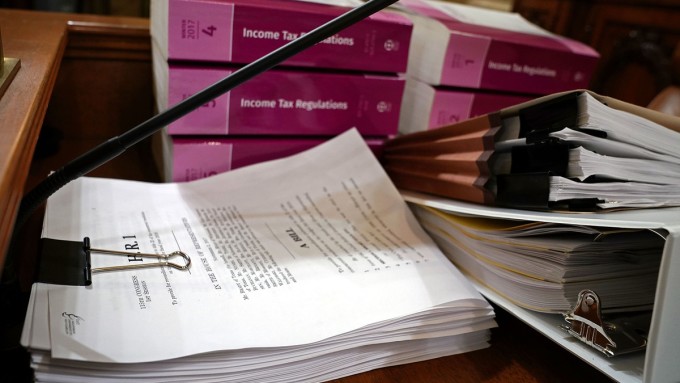Changes In Tax Code Benefit Real Estate Investors, Especially for Older Buildings
 By Rick Tannenbaum
By Rick Tannenbaum
There is much about the Trump tax plan that needs to be demystified but at least a few changes have real estate investors smiling: New provisions in the code allow for bonus depreciation of certain reclassified assets, and an expanded definition of Section 179 property.
Bonus Depreciation
Originally established after September 11th to spur economic growth, and before changes in the tax code, bonus or accelerated depreciation allowed an investor to write off a portion of an eligible asset in the year it was acquired – 50% in 2017. Under the Tax Cuts and Jobs Act, bonus depreciation increased to 100% for eligible assets acquired and placed in service after September 17, 2017.
Real estate investors rejoice at new depreciation opportunities
The 100% bonus depreciation rules apply for the next five years.
Segregated Assets
The real bonus though is for investors who segregate their assets and acquisitions. “Engineering-based” cost segregation enables commercial real estate owners to reallocate depreciable real property (under Code Sec. 1250) to tangible personal property (under Code Sec. 1245). Assets previously based on 39-year depreciation schedules can be reallocated to 5, 7 or 15-year schedules, depending on the type of asset. This results in a substantially shorter depreciable tax life and accelerated depreciation methods.
Cost segregation is based on the fundamental principle that “a dollar today is worth more than a dollar tomorrow”. The same logic applies to the statement: “a tax deduction today is worth more than a tax deduction tomorrow.” By accelerating a building’s depreciation, property owners can lower their tax liability and thus realize a significant increase in cash flow.
The benefits of a cost segregation study include:
- An increase in cash flow
- A reduction in tax liability
- The deferral of taxes
- The ability to reclaim “missed” depreciation deductions from prior years (without having to amend tax return
But, there’s more.
In the past, assets had to pass a “first-use” test to qualify for bonus depreciation. Changes in the tax law now allow bonus depreciation to qualified “used” assets (property that has been used by previous owners), for those used assets acquired after September 27, 2017. Let’s look at an industrial property acquired in January of 2018 for $4 million. And, let’s say a segregation study reveals the existing parking lot, landscaping and other qualified property amounts to $500,000. The entire $500,000 would be bonus eligible in 2018, even though it pre-existed the purchase.
Section 179 Improvements
Other changes in the new tax law expand the definition of eligible new Section 179 property to include roofs, HVAC, sprinklers, and alarm and security systems installed after the building was originally placed in service. The depreciation deduction is limited to $1 million per year, and phases out at $2.5 million. This amount is exclusive of investments in items like carpet and furniture which are also now eligible for a 100% write off.
Let’s consider this example.
An investor acquired a warehouse in January of 2018 for $3 million, of which $600,000 is attributed to non-depreciable land. A segregation analysis reveals that $250,000 is related to 15-year land improvements (parking lot, curbing, landscaping, etc.) and $100,000 is related to 5-year equipment (personal) property. Under changes to the tax law, all of this property is now eligible for bonus depreciation in 2018, allowing for a deduction of $350,000. At a 28% tax rate, this change alone would save the investor an additional $98,000.
The real benefit applies to the rehabilitation of older buildings which are likely to have more deferred maintenance, buildout costs and repairs, as well as more “used” property. Changes to the new tax law will make it more economically feasible for investors to purchase and rehab older buildings instead of purchasing new facilities as investors will be able to benefit from added tax benefits up front.
Rick Tannenbaum runs a real estate advisory service for investors, and is a strategic planner and analyst. Reach him at rick.tannenbaum@live.com
Real Estate Investors Rejoice Over New Depreciation Opportunities







